| |||||||||||||||||||||||||||||||
CURATOR INDEX
|
|
in stock $60.00 Free Shipping UPS GROUND IN THE CONTINENTAL U.S. |
 Eva Hesse: Oberlin Drawings
Eva Hesse: Oberlin Drawings
Drawings in the Collection of the Allen Memorial Art Museum, Oberlin College
Published by Hauser & Wirth Publishers.
Edited by Barry Rosen. Foreword by Helen Hesse Charash, Andria Derstine. Text by Briony Fer, Gioia Timpanelli, Manuela Ammer, Andrea Gyorody, Jörg Daur.
A New York Times critics' pick | Best Art Books 2020
This monumental tome contains the entirety of the important German artist’s drawings held in the collection of the Allen Memorial Art Museum, Oberlin College, Ohio. The AMAM was the first museum to purchase a sculpture by Hesse, Laocoon, in 1970. In gratitude for its recognition of Hesse's work, and following the artist's untimely death, her sister Helen Hesse Charash generously donated the artist's notebooks, diaries, sketchbooks, photographs and letters to the museum.
Hesse’s drawings played a crucial role in her work, which in turn gave way to an array of highly innovative techniques and styles that today still defy classification. As she commented in 1970: “I had a great deal of difficulty with painting but never with drawing ... the translation or transference to a large scale and in painting was always tedious.... So I started working in relief and with line.” Hesse’s custom of introducing sculptural materials into drawing and painting continues to influence artmaking today.
Eva Hesse (1936–70) was one of the foremost artists of the 20th century. Her work combined the seriality and reductionism of 1960s minimalism with emotion, sensuousness and physicality. Her work is in the collections of the Museum of Modern Art, Tate, Guggenheim and many others.
PUBLISHER
Hauser & Wirth Publishers
BOOK FORMAT
Hardcover, 9.5 x 11 in. / 428 pgs / 391 color.
PUBLISHING STATUS
Pub Date 5/21/2019
Active
DISTRIBUTION
D.A.P. Exclusive
Catalog: FALL 2019 p. 103
PRODUCT DETAILS
ISBN 9783906915395 TRADE
List Price: $60.00 CAD $85.00
AVAILABILITY
Out of stock
STATUS: Out of stock Temporarily out of stock pending additional inventory. |
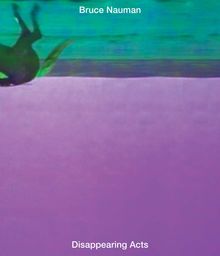 Bruce Nauman: Disappearing Acts
Bruce Nauman: Disappearing Acts
Published by The Museum of Modern Art, New York.
Edited by Kathy Halbreich, Isabel Friedli, Heidi Naef, Magnus Schaefer, Taylor Walsh. Text by Thomas Beard, Briony Fer, Nicolás Guagnini, Kathy Halbreich, Rachel Harrison, Ute Holl, Suzanne Hudson, Julia Keller, Liz Kotz, Ralph Lemon, Glenn Ligon, Catherine Lord, Roxana Marcoci, Magnus Schaefer, Felicity Scott, Martina Venanzoni, Taylor Walsh, Jeffrey Weiss.
At 76 years old, Bruce Nauman is widely acknowledged as a central figure in contemporary art whose stringent questioning of values such as good and bad remains urgent today. Throughout his 50-year career, he has explored how mutable experiences of time, space, sound, movement and language provide an insecure foundation for our understanding of our place in the world.
This richly illustrated catalog offers a comprehensive view of Nauman’s work in all mediums, spanning drawings across the decades; early fiberglass sculptures; sound environments; architecturally scaled, participatory constructions; rhythmically blinking neons; and the most recent 3D video that harks back to one of his earliest performances. A wide range of authors—curators, artists and historians of art, architecture and film—focus on topics that have been largely neglected, such as the architectural models that posit real or imaginary sites as models for ethical inquiry and mechanisms of control. An introductory essay explores Nauman’s many acts of disappearance, withdrawal and deflection as central formal and intellectual concerns. The 18 other contributions discuss individual objects or themes that persist throughout the artist’s career, including the first extensive essay on Nauman as a photographer and the first detailed treatment on the role of color in his work. A narrative exhibition history traces his reception, and features a number of rare or previously unpublished images.
Bruce Nauman was born in Indiana in 1941 and raised near Milwaukee, Wisconsin. He studied math, music and physics at the University of Wisconsin–Madison before switching his major to visual art, and received an MA in sculpture from the University of California, Davis, in 1966. In 1979 he moved to New Mexico, where he continues to reside. Nauman’s work has been the subject of two previous retrospectives, in 1972 and 1994. In 2009 he represented the United States at the Venice Biennale, where he won the Golden Lion.
Thomas Beard is Co-Founder of Light Industry, a venue for film and electronic art in Brooklyn and Programmer at Large for the Film Society of Lincoln Center.
Briony Fer is Professor of the History of Art at University College London and a Fellow of the British Academy.
Isabel Friedli is Curator and Head of Publications at the Schaulager, Basel.
Nicolás Guagnini is a New York-based artist.
Kathy Halbreich is the Laurenz Foundation Curator and former Associate Director at the Museum of Modern Art, New York.
Rachel Harrison is an artist who lives and works in Brooklyn.
Ute Holl is Professor of Media Studies at the University of Basel. Her research focuses on the nexus of cinema, perception, and knowledge.
Suzanne Hudson is Associate Professor of Art History and Fine Arts at the University of Southern California.
Julia Keller is Curatorial Assistant at Schaulager Basel.
Liz Kotz is an Associate Professor in the Department of the History of Art at University of California, Riverside.
Ralph Lemon is a choreographer, writer and visual artist based in New York. His recent exhibitions include Bibelots, at Bortolami, New York in 2017, and Union Gaucha Productions (with Karin Schneider) at Artists Space, New York.
Glenn Ligon is an artist based in New York. A mid-career retrospective of his work was organized by the Whitney Museum of American Art in 2011.
Catherine Lord is a writer, artist, curator and Professor Emerita of Art at the University of California, Irvine.
Roxana Marcoci is Senior Curator in the Department of Photography at the Museum of Modern Art, New York.
Magnus Schaefer is Assistant Curator in the Department of Drawings and Prints at the Museum of Modern Art, New York.
Felicity Scott is Associate Professor of Architecture and Co-director of the Critical, Curatorial and Conceptual Practices in Architecture program at Columbia University.
Martina Venanzoni is a member of the research and editorial team at Schaulager Basel.
Taylor Walsh is Curatorial Assistant in the Department of Drawings and Prints at the Museum of Modern Art, New York.
Jeffrey Weiss is Senior Curator at the Solomon R. Guggenheim Museum, New York, where he codirected the Panza Collection Initiative.
PUBLISHER
The Museum of Modern Art, New York
BOOK FORMAT
Hardcover, 9 x 10.5 in. / 356 pgs / 250 color.
PUBLISHING STATUS
Pub Date 2/27/2018
Active
DISTRIBUTION
D.A.P. Exclusive
Catalog: SPRING 2018 p. 3
PRODUCT DETAILS
ISBN 9781633450318 TRADE
List Price: $75.00 CAD $99.00
AVAILABILITY
In stock
in stock $75.00 Free Shipping UPS GROUND IN THE CONTINENTAL U.S. |
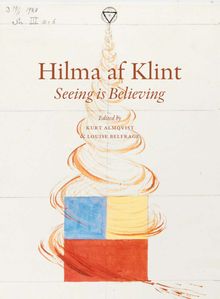 Hilma af Klint: Seeing is Believing
Hilma af Klint: Seeing is Believing
Published by Koenig Books.
Edited by Kurt Almqvist, Louise Belfrage. Text by Daniel Birnbaum, Briony Fer, Branden W. Joseph, David Lomas, Hans Ulrich Obrist.
This volume reproduces the last abstract images series made by af Klint in the 1920s, which have never before been published in their entirety.
These images are complemented by essays based on lectures delivered during the exhibition Hilma af Klint: Painting the Unseen, at London’s Serpentine Galleries in 2016. Briony Fer, David Lomas, Branden Joseph, Hans Ulrich Obrist and Daniel Birnbaum shed new light on af Klint and her importance for artists today, also addressing the need for a broader conception of art history that her work proposes.
PUBLISHER
Koenig Books
BOOK FORMAT
Flexi, 7.25 x 10 in. / 120 pgs / 75 color.
PUBLISHING STATUS
Pub Date 9/26/2017
Out of print
DISTRIBUTION
D.A.P. Exclusive
Catalog: FALL 2017 p. 128
PRODUCT DETAILS
ISBN 9783960981183 TRADE
List Price: $32.00 CAD $42.50
AVAILABILITY
Not available
STATUS: Out of print | 00/00/00 For assistance locating a copy, please see our list of recommended out of print specialists |
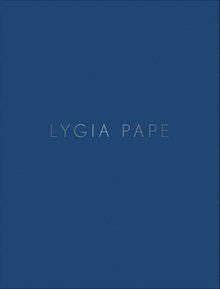 Lygia Pape
Lygia Pape
Published by Hauser & Wirth Publishers.
Text by Briony Fer, Daniel Birnbaum.
A founding member of Brazil's Neo-Concrete movement, Lygia Pape (1927–2004) made art that favored the primacy of the viewer's sensorial experience. Pape's geometric abstractions explore rich territory through sculpture, drawing, engraving, filmmaking and installation. This publication brings together works spanning 1955 to 2001. The precise incised lines of Pape's Tecelares woodcut prints and drawings of the 1950s and '60s marry pure geometry with organic patterns. Her subsequent Ttéia installations (begun in the late 1970s and continued throughout her career) present captivating explorations of geometry, space and materiality. Installation views and detail shots of these works complement texts by Briony Fer and Daniel Birnbaum, two ardent followers of Pape's work.
PUBLISHER
Hauser & Wirth Publishers
BOOK FORMAT
Clth, 9.75 x 12.75 in. / 96 pgs / 59 color / 2 bw.
PUBLISHING STATUS
Pub Date 5/23/2017
Active
DISTRIBUTION
D.A.P. Exclusive
Catalog: FALL 2017 p. 147
PRODUCT DETAILS
ISBN 9783952446133 TRADE
List Price: $45.00 CAD $60.00
AVAILABILITY
In stock
in stock $45.00 Free Shipping UPS GROUND IN THE CONTINENTAL U.S. |
 Susan Morris: Self Moderation
Susan Morris: Self Moderation
Published by Verlag für moderne Kunst.
Text by Briony Fer, Felicity Lunn, Sadie Plant.
British artist Susan Morris (born 1962) subverts traditional notions of self-portraiture by replacing external appearance with recorded traces of everyday activity and automatic bodily movement. This volume compiles her work: data on sleeplessness transcribed into abstract screen-prints, inkjet prints that chart her biorhythms, and more.
PUBLISHER
Verlag für moderne Kunst
BOOK FORMAT
Paperback, 8.25 x 11.5 in. / 96 pgs / 40 color / 10 bw.
PUBLISHING STATUS
Pub Date 10/24/2017
Active
DISTRIBUTION
D.A.P. Exclusive
Catalog: FALL 2017 p. 190
PRODUCT DETAILS
ISBN 9783903131637 FLAT40
List Price: $29.95 CAD $39.95
AVAILABILITY
Out of stock
STATUS: Out of stock Temporarily out of stock pending additional inventory. |
 Callum Innes: I'll Close My Eyes
Callum Innes: I'll Close My Eyes
Published by Hatje Cantz.
Text by Fiona Bradley, Briony Fer, Colm Tóibín, et al.
Since the 1990s, Scottish painter Callum Innes (born 1962) has steadily created poetic minimalist paintings using different color combinations and intensities, as well as different materials—canvas, watercolor paper and masonry. Here, photographs of installations and details highlight the sensual effects of Innes’ art.
PUBLISHER
Hatje Cantz
BOOK FORMAT
Hardcover, 10 x 12 in. / 304 pgs / 240 color.
PUBLISHING STATUS
Pub Date 4/25/2017
Out of stock indefinitely
DISTRIBUTION
D.A.P. Exclusive
Catalog: FALL 2017 p. 181
PRODUCT DETAILS
ISBN 9783775742450 FLAT40
List Price: $85.00 CAD $112.50
AVAILABILITY
Not available
STATUS: Out of stock indefinitely. |
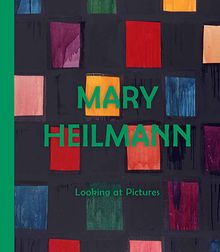 Mary Heilmann: Looking at Pictures
Mary Heilmann: Looking at Pictures
Published by Whitechapel Gallery.
Edited with text by Lydia Yee. Text by Briony Fer, Mary Heilmann.
Mary Heilmann: Looking at Pictures explores the artist’s approach to abstraction from two distinct but interrelated perspectives: the formal and the personal. The autobiographical dimension of the artist’s work is clear in her pieces related to friendships, memories and places; while the formal aspect of her oeuvre is evident in her paintings of grids and squares rendered in primary colors and in works based on architectural planes.
As well as a new essay by Briony Fer and writings on key works by the artist, the volume features over 100 beautiful full-color illustrations of paintings, works on paper, furniture and ceramics from Heilmann’s five-decade career.
Mary Heilmann was born in San Francisco in 1940. She studied at the University of California at Santa Barbara, San Francisco State University and the University of California at Berkeley before moving to New York in 1968. Heilmann began her career creating furniture and sculpture and moved into abstract painting once on the East Coast, experimenting with bright colors and unusual geometries that bridge two-dimensional and three-dimensional elements. She has been the recipient of the Anonymous Was a Woman Foundation Award as well as a Guggenheim Foundation award.
Briony Fer is an art historian who has written extensively on modern and contemporary art. Her research interests have consistently moved between the history of the avant-gardes and the work of contemporary artists, including Gabriel Orozco, Roni Horn, David Batchelor and Tacita Dean. Her books include On Abstract Art (1997), The Infinite Line (2004), and Eva Hesse: Studiowork (2009). She has also organized exhibitions of Eva Hesse’s studiowork as well as, most recently, an exhibition of the work of Gabriel Orozco, accompanied by the monograph Gabriel Orozco: thinking in circles (2013). In spring 2014, she was Kirk Varnedoe Professor at the Institute of Fine Arts in New York. She is Professor of History of Art at University College London and a Fellow of the British Academy.?
PUBLISHER
Whitechapel Gallery
BOOK FORMAT
Hardcover, 9.25 x 10.75 in. / 176 pgs / 100 color.
PUBLISHING STATUS
Pub Date 8/23/2016
Active
DISTRIBUTION
D.A.P. Exclusive
Catalog: FALL 2016 p. 84
PRODUCT DETAILS
ISBN 9780854882472 TRADE
List Price: $45.00 CAD $60.00
AVAILABILITY
In stock
in stock $45.00 Free Shipping UPS GROUND IN THE CONTINENTAL U.S. |
 Francis Picabia: Our Heads Are Round so Our Thoughts Can Change Direction
Francis Picabia: Our Heads Are Round so Our Thoughts Can Change Direction
Published by The Museum of Modern Art, New York.
Edited with text by Anne Umland, Cathérine Hug. Text by George Baker, Carole Boulbčs, Masha Chlenova, Michčle C. Cone, Briony Fer, Gordon Hughes, David Joselit, Jean-Jacques Lebel, Bernard Marcadé, Arnauld Pierre, Juri Steiner, Adrian Sudhalter, Aurélie Verdier.
Irreverent and audacious, restless and brilliant, Francis Picabia achieved fame as a leader of the Dada group only to break publicly with the movement in 1921. Moving between Paris, the French Riviera, Switzerland, and New York, he led a dashing life, painting, writing, yachting, gambling, racing fast cars, and organizing lavish parties. Like no other artist before him, Picabia created a body of work that defies consistency and categorization, from Impressionist landscapes to abstraction, from Dada to stylized nudes, and from performance and film to poetry and publishing. A primary constant in his career was his vigorous unpredictability.
Illustrated with nearly 500 reproductions, this sweeping survey of Picabia's eclectic career embraces the challenge of his work, asking how we can make sense of its wildly shifting mediums and styles. In her opening essay, curator Anne Umland writes that with Picabia, familiar oppositions "between high art and kitsch, progression and regression, modernism and its opposite, and success and failure are undone."
In 15 superb essays, additional authors—including distinguished professors George Baker, Briony Fer, and David Joselit and renowned Picabia scholars Carole Boulbčs and Arnauld Pierre—delve into the radically various mediums, styles, and contexts of Picabia's work, discussing his Dada period, his abstractions, his mechanical paintings, his appropriations of source imagery, his multifaceted relationship with print (both in his paintings and as a publisher and contributor to vanguard journals), his forays into screenwriting and theater, and his complex politics. Marcel Duchamp, of course, but also Nietzsche and Gertrude Stein make repeat appearances along the way.
Turning to Picabia's contemporary legacy, Cathérine Hug maps the history of his critical reception and interviews contemporary curators and artists, including Peter Fischli, Albert Oehlen, and David Salle. A lively 30-page chronology illustrated with archival photographs and ephemera gives readers a year-by-year account of the artist's colorful life and of his interactions with fellow artists and critics, friends, and lovers.
Together these essays suggest that the unruly genius of Picabia offers us a powerfully relevant and provocative alternative to the familiar narrative of modernism.
Francis Picabia: Our Heads Are Round So Our Thoughts Can Change Direction accompanies the major 2016 exhibition on the artist, jointly organized by The Museum of Modern Art, New York, and the Kunsthaus Zürich.
Francis Picabia was born in 1879 in Paris, the only child of a Cuban-born Spanish father and a French mother. His first success came as a painter in an Impressionist manner. He went on to become one of the principle figures of the Dada movement in New York and Paris. In 1925 Picabia moved to the south of France, where he lived and worked through World War II. Following the war, Picabia returned to Paris, where he died in 1953.
Anne Umland is the Blanchette Hooker Rockefeller Curator of Painting and Sculpture at the Museum of Modern Art, New York.
Cathérine Hug is Curator, 20th Century Art at the Kunsthaus Zürich, Switzerland.
PUBLISHER
The Museum of Modern Art, New York
BOOK FORMAT
Hardcover, 9.5 x 12 in. / 368 pgs / 500 color.
PUBLISHING STATUS
Pub Date 7/26/2016
Active
DISTRIBUTION
D.A.P. Exclusive
Catalog: SPRING 2016 p. 9
PRODUCT DETAILS
ISBN 9781633450035 TRADE
List Price: $75.00 CAD $99.00
AVAILABILITY
In stock
in stock $75.00 Free Shipping UPS GROUND IN THE CONTINENTAL U.S. |
 Agnes Martin
Agnes Martin
Published by D.A.P..
Edited by Frances Morris, Tiffany Bell. Text by Marion Ackermann, Rachel Barker, Jacquelynn Baas, Tiffany Bell, Christina Bryan Rosenberger, Briony Fer, Lena Fritsch, Anna Lovatt, Frances Morris, Maria Müller-Schareck, Richard Tobin, Rosemarie Trockel.
Published with Tate.
This groundbreaking survey provides an in-depth account of Martin's artistic career, from lesser-known early experimental works through her striped and gridded grey paintings and use of color in various formats, to a group of her final pieces that reintroduce bold forms. A selection of drawings and watercolors and Martin's own writing are also included. Edited by the exhibitions's co-curators Frances Morris and Tiffany Bell, and with essays by leading scholars that give a context for Martin's work—her life, relationship with other artists, the influence of South-Asian philosophy—alongside focused shorter pieces on particular paintings, this beautifully designed volume is the definitive publication on her oeuvre. Frances Morris places Martin's work in the art historical context of the time; art historian Richard Tobin analyzes Martin's painting "The Islands"; conservator Rachel Barker offers the reader a close viewing of "Morning"; curator Lena Fritsch provides a visual biography by comparing photographic portraits of Martin from different periods; and art historian Jacquelynn Baas delves into the spiritual and philosophical beliefs so present in Martin's art, including Platonism, Christian mysticism, Zen Buddhism and Taoism.Agnes Martin was born in Maklin, Saskatchewan, Canada, in 1912, and moved to the US in 1932, studying at universities in Oregon, California, New Mexico and New York. She painted still lifes and portraits until the early 1950s, when she developed an abstract biomorphic style influenced by Abstract Expressionism. Her first one-woman exhibition was held at the Betty Parsons Gallery, New York, in 1958. Partly through close friendships with artists such as Ellsworth Kelly and Ad Reinhardt, Martin began to experiment with symmetrical compositions of rectangles or circles within a square, then from around 1960–61 to work with grids of delicate horizontal and vertical lines. She left New York in 1967, shortly after the death of Reinhardt, and moved to New Mexico, where she lived until her death in 2004.
PUBLISHER
D.A.P.
BOOK FORMAT
Hardcover, 8.25 x 10.5 in. / 272 pgs / 160 color.
PUBLISHING STATUS
Pub Date 7/28/2015
Active
DISTRIBUTION
D.A.P. Exclusive
Catalog: SPRING 2015 p. 178
PRODUCT DETAILS
ISBN 9781938922763 TRADE
List Price: $60.00 CAD $92.00
AVAILABILITY
In stock
in stock $60.00 Free Shipping UPS GROUND IN THE CONTINENTAL U.S. |
 Ellsworth Kelly: Outside In
Ellsworth Kelly: Outside In
Published by Matthew Marks Gallery.
Text by Briony Fer.
Ellsworth Kelly: Outside In is, likewise, more than the sum of its parts. With an oversize format and generous images, the book introduces the artist's latest body of work in stunning color. Its introductory essay, by art historian Briony Fer, provides insight into Kelly's perpetual movement between inside and outside, past and present, two dimensions and three.
PUBLISHER
Matthew Marks Gallery
BOOK FORMAT
Hardcover, 9.75 x 12.75 in. / 56 pgs / 30 color / 3 bw.
PUBLISHING STATUS
Pub Date 8/25/2015
Out of print
DISTRIBUTION
D.A.P. Exclusive
Catalog: FALL 2015 p. 130
PRODUCT DETAILS
ISBN 9781880146903 TRADE
List Price: $35.00 CAD $40.00
AVAILABILITY
Not available
STATUS: Out of print | 00/00/00 For assistance locating a copy, please see our list of recommended out of print specialists |
 Lygia Clark: The Abandonment of Art
Lygia Clark: The Abandonment of Art
Published by The Museum of Modern Art, New York.
Edited by Cornelia Butler, Luis Pérez-Oramas. Text by Sergio Bessa, Eleonora Fabiăo, Briony Fer, Geaninne Gutiérrez-Guimarăes, André Lepecki, Zeuler Lima, Christine Macel, Frederico de Oliveira Coelho.
Lygia Clark (1920–1988) trained in Rio de Janeiro and Paris from the late 1940s to the mid-1950s. From the late 1960s through the 1970s she created a series of unconventional artworks in parallel to a lengthy psychoanalytic therapy, leading her to develop a series of therapeutic propositions grounded in art. Clark has become a major reference for contemporary artists dealing with the limits of conventional forms of art.
Cornelia Butler is Chief Curator at the Hammer Museum in Los Angeles.
Luis Perez-Oramas is the Estrellita Brodsky Curator of Latin American Art for the Department of Drawings and Prints at The Museum of Modern Art.
Sergio Bessa is the director of curatorial and education programs at the Bronx Museum, and a teacher of Museum Education at Columbia University.
Eleonora Fabiao is a performer/performance theorist and Associate Professor at the Federal University of Rio de Janeiro.
Briony Fer is a British art historian, curator and Professor of History of Art at University College London.
Geaninne Gutiérrez-Guimarães has curated for the Museum of Modern Art and the Bertha and Karl Leubsdorf Art Gallery.
Andre Lepecki is Associate Professor at the Department of Performance Studies at Tisch School of the Arts at New York University. He is a writer and curator working mainly on performance studies, choreography and dramaturgy.
Zeuler Lima is an architect and associate professor of history, theory and design at the School of Design and Visual Arts at Washington University in St. Louis.
PUBLISHER
The Museum of Modern Art, New York
BOOK FORMAT
Hardcover, 9.5 x 12 in. / 336 pgs / 400 color.
PUBLISHING STATUS
Pub Date 10/31/2014
Out of stock indefinitely
DISTRIBUTION
D.A.P. Exclusive
Catalog: SPRING 2014 p. 28
PRODUCT DETAILS
ISBN 9780870708909 TRADE
List Price: $75.00 CAD $99.00
AVAILABILITY
Not available
STATUS: Out of stock indefinitely. |
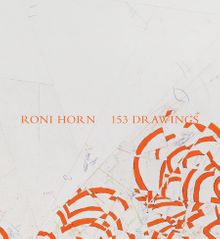 Roni Horn: 153 Drawings
Roni Horn: 153 Drawings
Published by JRP|Ringier.
Edited by Michaela Unterdörfer. Text by Tacita Dean, Briony Fer.
PUBLISHER
JRP|Ringier
BOOK FORMAT
Clth, 11 x 12 in. / 324 pgs / 153 color.
PUBLISHING STATUS
Pub Date 4/30/2013
Out of print
DISTRIBUTION
D.A.P. Exclusive
Catalog: SPRING 2013 p. 107
PRODUCT DETAILS
ISBN 9783037643051 TRADE
List Price: $80.00 CAD $107.50
AVAILABILITY
Not available
STATUS: Out of print | 00/00/00 For assistance locating a copy, please see our list of recommended out of print specialists |
 James Castle: Show and Store
James Castle: Show and Store
Published by D.A.P..
Text by Lynne Cooke, Briony Fer, Zoe Leonard, Suzanne Hudson.
Published with Museo Nacional Centro de Arte Reina Sofía.
For more than six decades, James Castle (1899-1977) dedicated himself virtually full-time to the activity of making art, producing a vast and accomplished body of work, much of which he managed to preserve. Growing up in rural Idaho, Castle devised his own art materials and techniques, making ink for drawing by moistening soot from the family stove with his own saliva and using discarded paper and other materials. In the 1950s, through the efforts of family members, Castle's work came to the attention of the local art community, and it began to be exhibited in Idaho and the Pacific Northwest, often under the rubric of outsider or self-taught art. Not until the late 1990s, however, did it appear in mainstream art circuits. Castle's work poses numerous challenges for the art historian. He was born profoundly deaf and never adopted conventional means of communication and thus never commented on his art. His works are neither titled nor dated, and it is difficult to trace an evolution or establish a chronology. As a result, previous scholarship has tended to focus on Castle's biography or on specific aspects of his oeuvre. James Castle: Show and Storetakes a different approach, looking at the entire scope of the artist's production--which included drawings, constructions made from found pieces of colored card and handmade books--and emphasizing the centrality of his display and storage methods to his practice. The essays in this volume also question the notion of Castle as an artist who worked in isolation from the world at large, examining his copying and reuse of images derived from printed media, including advertising and product packaging, and perhaps even television. Illustrated with more than 200 full-color reproductions, Show and Storeexamines drawings, handmade books, cardboard and paper constructions and collages.
Born profoundly deaf, James Castle (1899-1977) never fully learned to read or write, instead developing his own unique sign system and visual vocabulary. He won some local acclaim during his lifetime (including 1963 and 1976 exhibitions at the Boise Gallery of Art) but only achieved international recognition after his death in 1977.
PUBLISHER
D.A.P.
BOOK FORMAT
Hardcover, 8.5 x 11 in. / 224 pgs / 220 color.
PUBLISHING STATUS
Pub Date 9/30/2011
Out of stock indefinitely
DISTRIBUTION
D.A.P. Exclusive
Catalog: FALL 2011 p. 40
PRODUCT DETAILS
ISBN 9781935202707 TRADE
List Price: $55.00 CAD $72.50
AVAILABILITY
Not available
STATUS: Out of stock indefinitely. |
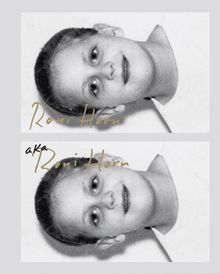 Roni Horn aka Roni Horn
Roni Horn aka Roni Horn
Published by Steidl & Partners.
Introduction by Donna De Salvo, Carter E. Foster, Mark Godfrey. Text by Briony Fer.
Born in New York in 1955, Roni Horn achieved international recognition in the 1980s, and her works have been the subject of numerous major exhibitions since. In 2007, she undertook Artangel's first international commission, creating Vatnasafn/Library of Water, a long-term installation in the town of Stykkisholmur, Iceland. She has had solo exhibitions at numerous leading art institutions, including Inverleith House, Edinburgh (2006), Fotomuseum Winterthur (2003), The Art Institute of Chicago (2004), Folkwang Museum, Essen (2004), Centre Pompidou, Paris (2003), Dia Center for the Arts, New York (2001-02) and Museo Serralves, Porto (2001).
PUBLISHER
Steidl & Partners
BOOK FORMAT
Slip, Hardcover, 2 vols, 7.75 x 9.75 in. / 430 pgs / 375 color.
PUBLISHING STATUS
Pub Date 5/31/2009
Out of print
DISTRIBUTION
D.A.P. Exclusive
Catalog: SPRING 2009 p. 86
PRODUCT DETAILS
ISBN 9783865218315 TRADE
List Price: $70.00 CAD $92.50
AVAILABILITY
Not available
STATUS: Out of print | 00/00/00 For assistance locating a copy, please see our list of recommended out of print specialists |
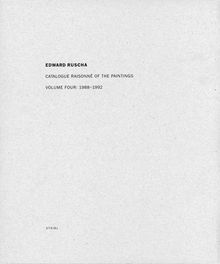 Ed Ruscha: Catalogue Raisonné of the Paintings, Volume Four
Ed Ruscha: Catalogue Raisonné of the Paintings, Volume Four
1988-1992
Published by Steidl & Partners.
Edited by Robert Dean, Lisa Turvey. Text by Briony Fer, Mel Bochner.
PUBLISHER
Steidl & Partners
BOOK FORMAT
Slip Paperback, 9.5 x 11.5 in. / 526 pgs / 198 color.
PUBLISHING STATUS
Pub Date 10/31/2009
Active
DISTRIBUTION
D.A.P. Exclusive
Catalog: SPRING 2009 p. 50
PRODUCT DETAILS
ISBN 9783865218339 TRADE
List Price: $240.00 CAD $270.00
AVAILABILITY
In stock
in stock $240.00 Free Shipping UPS GROUND IN THE CONTINENTAL U.S. |
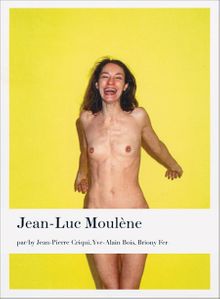 Jean-Luc Moulčne
Jean-Luc Moulčne
Published by Walther König, Köln.
Text by Jean-Pierre Criqui, Yves-Alain Bois, Briony Fer.
PUBLISHER
Walther König, Köln
BOOK FORMAT
Paperback, 9 x 11.75 in. / 172 pgs / 82 color / 12 bw.
PUBLISHING STATUS
Pub Date 8/31/2009
Out of print
DISTRIBUTION
D.A.P. Exclusive
Catalog: FALL 2009 p. 143
PRODUCT DETAILS
ISBN 9783865605894 TRADE
List Price: $45.00 CAD $60.00
AVAILABILITY
Not available
STATUS: Out of print | 00/00/00 For assistance locating a copy, please see our list of recommended out of print specialists |
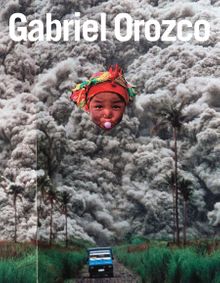 Gabriel Orozco
Gabriel Orozco
Published by The Museum of Modern Art, New York.
Text by Ann Temkin, Anne Byrd, Benjamin H. D. Buchloh, Briony Fer, Paulina Pobocha.
Gabriel Orozco (born in Mexico, 1962) studied at the Escuela Nacional de Artes Plásticas in Mexico City, and at the Círculo de Bellas Artes in Madrid, Spain. He has exhibited at the Whitney Museum of American Art, The Museum of Modern Art, New York, the Guggenheim Museum, the Philadelphia Museum of Art and the Venice Biennale. Orozco lives and works in New York, Paris and Mexico City.
PUBLISHER
The Museum of Modern Art, New York
BOOK FORMAT
Hardcover, 9.75 x 12.25 in. / 256 pgs / 435 color.
PUBLISHING STATUS
Pub Date 12/31/2009
Out of stock indefinitely
DISTRIBUTION
D.A.P. Exclusive
Catalog: FALL 2009 p. 13
PRODUCT DETAILS
ISBN 9780870707629 TRADE
List Price: $55.00 CAD $72.50
AVAILABILITY
Not available
STATUS: Out of stock indefinitely. |
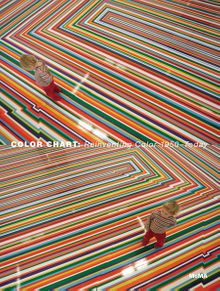 Color Chart
Color Chart
Reinventing Color: 1950 to Today
Published by The Museum of Modern Art, New York.
Text by Ann Temkin, Briony Fer. Melissa Ho, Nora Lawrence.
Published to accompany a major exhibition at The Museum of Modern Art, New York, this volume begins with Marcel Duchamp’s Tu m’, the artist’s final painting, made in 1918, with its long array of color samples looming across the canvas. This early recognition of color’s commercial nature was fully explored more than three decades later by artists such as Robert Rauschenberg, Andy Warhol, Gerhard Richter and Alighiero Boetti, who in the 1950s to the 1970s, with a host of others, redefined the parameters of color from a matter of personal expression to one of arbitrary systems and random processes. The repercussions of this transformation continue to be felt into the twenty-first century, in work by artists including Sherrie Levine, Mike Kelley and Damien Hirst, as well as others who explore color in digital technology This volume traces the lineage of the questions provoked by color’s new status, and the variety of answers that have resulted.
PUBLISHER
The Museum of Modern Art, New York
BOOK FORMAT
Clothbound, 9 x 12 in. / 248 pgs / 280 color.
PUBLISHING STATUS
Pub Date 3/1/2008
Out of print
DISTRIBUTION
D.A.P. Exclusive
Catalog: SPRING 2008 p. 46
PRODUCT DETAILS
ISBN 9780870707315 TRADE
List Price: $55.00 CAD $65.00
AVAILABILITY
Not available
STATUS: Out of print | 00/00/00 For assistance locating a copy, please see our list of recommended out of print specialists |
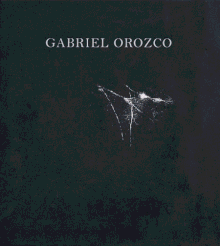 Gabriel Orozco
Gabriel Orozco
Published by Turner/A&R Press/Conaculta-INBA.
Text by Yve-Alain Bois, Benjamin H.D. Buchloh, Briony Fer.
PUBLISHER
Turner/A&R Press/Conaculta-INBA
BOOK FORMAT
Hardcover, 11.5 x 12.25 in. / 360 pgs / 700 color.
PUBLISHING STATUS
Pub Date 4/1/2007
Out of print
DISTRIBUTION
D.A.P. Exclusive
Catalog: FALL 2007 p. 74
PRODUCT DETAILS
ISBN 9789689056065 TRADE
List Price: $90.00 CAD $110.00
AVAILABILITY
Not available
STATUS: Out of print | 5/26/2013 For assistance locating a copy, please see our list of recommended out of print specialists |
Giuseppe Penone: The Imprint Of Drawing
Published by The Drawing Center.
Edited by Catherine de Zegher. Essays by Michael Newman, Briony Fer, Ruggero Penone, and Kathryn A. Tuma.
PUBLISHER
The Drawing Center
BOOK FORMAT
Paperback, 8.25 x 11 in. / 126 pgs / 94 bw
PUBLISHING STATUS
Pub Date 7/2/2004
Out of print
DISTRIBUTION
D.A.P. Exclusive
Catalog: FALL 2004
PRODUCT DETAILS
ISBN 9780942324204 TRADE
List Price: $25.00 CAD $30.00
AVAILABILITY
Not available
STATUS: Out of print | 8/15/2005 For assistance locating a copy, please see our list of recommended out of print specialists |
Gabriel Orozco: Serpentine Gallery
Published by Walther König, Köln.
Essays by Benjamin H.D. Buchloh, Briony Fer, and Rochelle Steiner.,
PUBLISHER
Walther König, Köln
BOOK FORMAT
Hardcover, 8.5 x 10.5 in. / 176 pgs / 159 color.
PUBLISHING STATUS
Pub Date 6/15/2004
Out of print
DISTRIBUTION
D.A.P. Exclusive
Catalog: SPRING 2005 p. 135
PRODUCT DETAILS
ISBN 9783883758374 SDNR30
List Price: $40.00 CAD $50.00
AVAILABILITY
Not available
STATUS: Out of print | 5/1/2009 For assistance locating a copy, please see our list of recommended out of print specialists |
